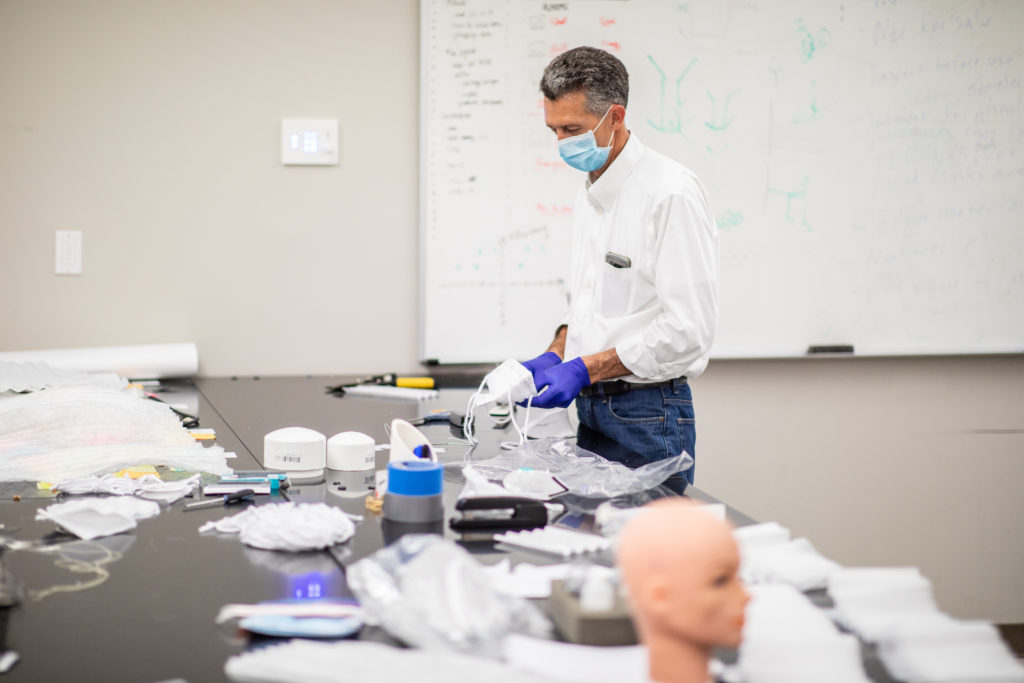As the global pandemic caused by the COVID-19 virus continues to spread, researchers from across the world are harnessing their skills and opening their labs to contribute to solutions for managing and addressing the health crisis. One area identified by hospitals and medical providers as a critical need has been the shortage of personal protective equipment (PPE), which is required to keep health care providers safe from exposure to the virus as they care for patients. In response, manufacturers such as 3M have promised to increase production in order to fulfill the extensive orders. However, medical providers may not see the bulk of these outputs for weeks even as current supplies are running low.
To address immediate needs, some health providers have been turning to the many DIY (do-it-yourself) plans available online for PPE. In many communities, small local businesses and research labs have offered to reconfigure their equipment to begin manufacturing masks and other protective equipment. But are these efforts viable and safe solutions? Enter the experts.

John C. Criscione, Ph.D., Vice Dean of EnMed (Engineering
Medicine) at Texas A&M University engaged his lab to set up an evaluation
system for DIY masks (Figure 1). “I began this work
because my colleagues in the Texas A&M Health Science Center were
considering the use of DIY PPE masks to be used in a crisis situation,” he
noted. “We all thought that a little test data could go a long way in assessing
the viability of options.”
Criscione’s lab is focused on design
and testing of medical devices, so it already had the appropriate process
knowledge in place. Even so, “I knew very little about PPE N95 masks two weeks
ago,” he said. “We had to learn the proper testing procedures and identify the
appropriate expertise on campus. Fortunately, the same type of masks are used
throughout campus for research like BSL-3, and there is much know-how in
occupational health and safety in a Tier 1 research university.”
Work started in the lab with building
and testing the most popular DIY masks designs available on the Internet. “We
quickly realized that they all failed in the fit testing,” Criscione noted. “Consequently,
our team went into a design iteration cycle focused exclusively on fit.” Each
of the three engineers on the team tested approximately 10 designs, and of those
30 designs, one consistently provided the best performance in the fit tests.
His lab then created a video showcasing their evaluation of this design and associated
recommendations, which is available for viewing by anyone who is searching for
a crisis alternative and might be concerned about the efficacy of these popular
DIY designs (https://enmed.tamu.edu/DIYmasks/).
Criscione notes that the biggest
challenge for these types of masks continues to be in the fit testing, which
his lab plans to pursue in more detail. According to Criscione, “there is a
need for data from a properly designed study using volunteers, and we are just
starting to explore the necessary IRB approvals.”
“The end goal of this project
is to generate data for healthcare providers to help them make rational
decisions on DIY masks. In addition to the fit testing, my colleagues have tested the filter efficiency of many
household materials to identify potential fabrics. Safety data on the
best filtering materials is currently the greatest gap.”
As to what would benefit this project
moving forward, Criscione would like to gather input from multiple experts regarding
the various standards. “How do we label something as almost meeting a standard?
Right now we just say that it does not achieve the N95 threshold and that puts
a decent mask in the same category as a bandana, yet clearly it is much better.”
Answering questions such as these remain next steps in the lab’s efforts to
contribute to the current crisis response, and as information evolves the site
will be updated.


